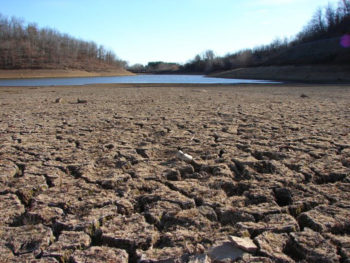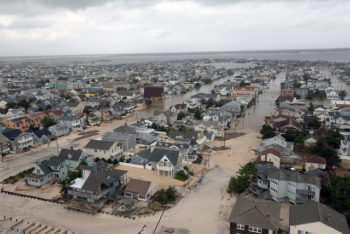The Impacts of Climate Change on Rivers
Water resources in the U.S. face a range of threats in a warming climate.
Many communities will see their water supplies shrink as temperatures rise and precipitation patterns shift. A rise in severe storms will degrade water quality and increase the risk of catastrophic floods. Changes in the timing and location of precipitation combined with rising levels of water pollution will strain ecosystems and threaten the survival of many fish and wildlife species. These shifts will have dramatic impacts on communities, threatening public health, weakening economies and decreasing the quality of life in many places.
None of this is happening in a vacuum
The consequences of shifting weather patterns will depend in large part upon choices that communities have made in the past and are making now. Cities that do not take steps to safeguard their water supply could see the tap run dry.
Those that fail to address aging infrastructure will experience greater increases in stormwater runoff and sewer overflows. Most importantly, communities that have done the greatest damage to their natural infrastructure – wetlands, forests, streams and rivers – will have fewer defenses to protect them against a changing climate.
Decisions related to land use planning, flood protection, water infrastructure and many other facets of community life have a profound impact on a community’s vulnerability in a warming world and will play a large role in determining the repercussions of the following changes.
Water Quantity
Climate change threatens to fundamentally alter where and when water is available across the nation. And adding new dams is not the answer.
Precipitation patterns are shifting, benefiting some regions with additional water while reducing snow and rainfall in other areas.
Southwestern states will experience the greatest decline in precipitation. Western snowmelt-dominated watersheds will also be hard hit.
Rising temperatures will cause more precipitation to fall as rain rather than snow and will melt mountain snowpack earlier in the season, reducing the natural reservoir that has historically fed western rivers throughout drier summer months.
Across the country, warmer temperatures will also increase evaporation from reservoirs and lakes, offsetting increases in precipitation in some regions and magnifying decreases in western areas. Reservoirs on the Colorado River already lose 1.8 million acre-feet of water to evaporation in an average year, about 13 percent of the river’s annual flow.
In addition to shifting averages, the increase in weather extremes presents a serious threat to many communities’ water supply. Precipitation is becoming more variable and more uncertain, leading to more frequent and more intense floods and droughts. The southeastern U.S., once considered water rich, has experienced record droughts over the past several years.
Water Quality
More frequent and more powerful storms will increase polluted runoff from urban and agricultural areas, picking up pollutants from the landscape and carrying them to nearby waterways. In older communities where stormwater and sewage are transported together in one pipe, heavy storms can overwhelm the system and send raw sewage and polluted stormwater into nearby streams and rivers.
These combined sewer overflows (CSO) will grow more frequent as extreme storms increase. In the Great Lakes Region, the frequency of CSOs could increase 13 percent to 70 percent, and the cost of controlling overflows could rise 10 percent.
Additional runoff will be compounded by lower flows and rising temperatures. More frequent droughts and shifting precipitation patterns lower water levels in rivers, lakes and streams, leaving less water to dilute pollutants. Higher temperatures cause more frequent algal blooms and reduce dissolved oxygen levels, both of which can cause fish kills and do significant harm to ecosystems.
Extreme Storms
Rising global temperatures and climate variability will increase the frequency and severity of extreme storm events. Atmospheric capacity to hold moisture increases exponentially with temperature, leading to a greater capacity for heavy precipitation events and floods.
Nationwide, the number of storms with extreme precipitation has increased 24 percent since 1948.
Events like Hurricane Sandy in the Northeast show the damage that extreme whether can do. This trend is expected to continue in the future. Resulting floods will claim lives and destroy property, especially in communities built in floodplains.
Already in the 20th century, floods caused more property damage and fatalities in the U.S. than any other type of natural disaster.
While no single flood event can be directly attributed to global warming, the recurrence of devastating 100-year and 500-year floods throughout the Midwest and other areas in recent years may foreshadow a future where repeated disasters of this magnitude are much more common.


